Laboratory lithium ion battery In-Situ gas volume analyzer for battery research
Outgassing behavior of lithium ion batteries:
TFormation gas production:
The formation process of lithium ion battery is accompanied by a large amount of gas generation, which is closely related to the battery chemical system, anode and cathode materials, electrolyte composition and formation conditions;
The forming conditions (such as current, cut-off voltage, temperature, pressure, etc.) affect the time of forming steps. Effectively shortening the forming cycle can greatly improve the production efficiency of enterprise batteries;
At present, the establishment of the formation process and conditions of enterprises basically depends on empirical judgment and lacks scientific and effective means and basis to improve the formation conditions;
Gas production during overcharging:
The risk of overcharging is a very important safety issue in the actual use of lithium-ion batteries;
Lithium ion batteries will have serious side effects during overcharging, and often accompanied by a large amount of gas generation, which makes the volume or internal pressure of the battery increase rapidly, increasing the risk of thermal runaway;
Gas production during storage or circulation:
In the process of long-term storage or circulation, lithium-ion batteries will slowly produce side reactions and gases, especially at high temperatures, which is more likely to happen. This is a very critical reliability issue of lithium-ion batteries.
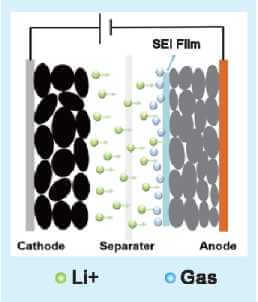
Functions of on-site gas volume analyzer
GVM series field gas volume analyzer adopts high-precision mechanical monitoring system, which can record the volume change of the battery in the whole process of charging and discharging, and obtain the accurate charging volume and volume change rate of the battery at each stage.
*Improve efficiency: quickly evaluate the outgassing behavior of cells, shorten the research and development cycle, and improve efficiency;
*Cost reduction: help optimize molding process, improve production efficiency, and reduce enterprise production costs;
*Battery design optimization: Quantify the inflation volume and inflation rate of battery 1 during the whole molding process.
By combining the three-electrode analysis of the formation curve, the influence of different design factors on the formation of the battery can be systematically evaluated, and it is helpful to optimize the performance of the battery by improving the formation of SEI.
*Reliability and safety design: The on-site gas volume monitor can also study and analyze the gas behavior during the abuse test such as overcharging and high-temperature cycling.
Creative solutions
In-situ measurement:
Through the self-developed high-precision mechanical sensing system installed in the GVM series field gas volume monitor, we can conduct continuous long-term and high stability measurement of the lithium-ion battery degassing process; Adopt high-precision ADC data acquisition module, and cooperate with multi-functional on-site gas volume monitoring software MISG. It can monitor the volume change of lithium ion battery during charging and discharging in real time, and display the expansion and contraction level of the battery online. Multi-module expansion can be easily realized through communication data based on CAN.
GVM series is the first on-site gas volume monitor in the lithium-ion battery industry.
*It has been developed in cooperation with CATL, a top power battery company, and has obtained exclusive patent authorization.
Equipment composition diagram and software

High-energy learning test system: long-term on-site online monitoring to meet the accuracy requirements;
Special test software: collect and display the data of mechanical test system in real time, and automatically draw the volume change curve;
Auxiliary system: special structural design, convenient for intervention in supporting auxiliary system, to achieve test temperature regulation and control
Applications
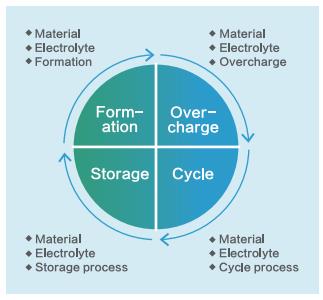
Formation gas evolution analysis
1. Application of formation gas of different materials
Test condition: 25 ℃ 0.04C/0.1C
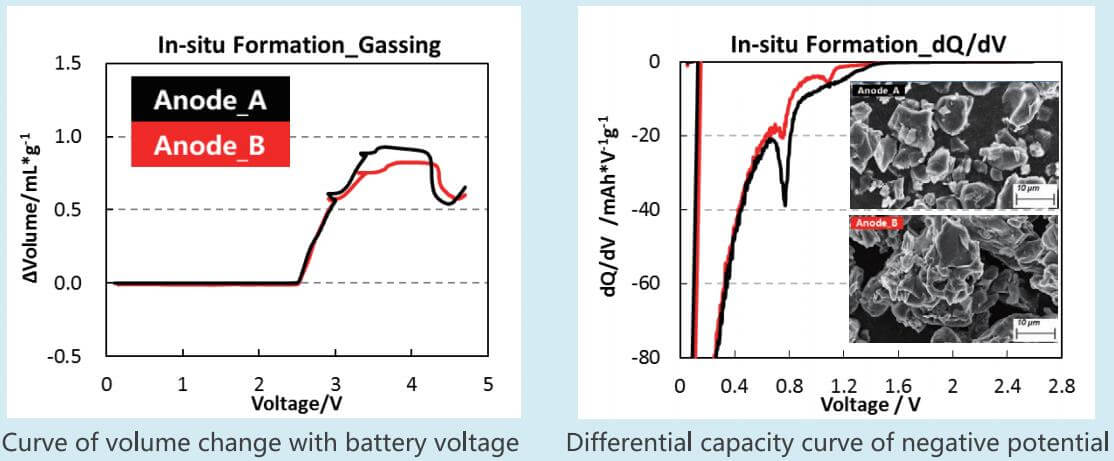
The modified material A has a smaller particle size than the conventional material B, and the SEI film formation reaction is more sufficient during the formation period, and the gas output is greater;
Under the same design parameters, only the material is modified and the surface is modified. By comparing the gas production and gas production of cell formation, the influence of processed materials on cell formation can be quickly and intuitively obtained, which is helpful for the development and improvement of new materials.
2.Different electrolyte’s formation-gassing application(test condition: 25℃ 0.02℃)
 In the same electrolyte, the gas production and gas production of the battery with electrolyte B added with certain additives are greater than that of electrolyte a without additives. The additive can make the cell membrane formation reaction more complete;
In the same electrolyte, the gas production and gas production of the battery with electrolyte B added with certain additives are greater than that of electrolyte a without additives. The additive can make the cell membrane formation reaction more complete;
The additives in the electrolyte have a great influence on the formation reaction of SEI film at the formation stage of the battery. The influence of additives on battery formation can be quickly evaluated by comparing the change of gas generation volume and gas generation rate between electrolyte and different additives. The influence of the formation process, combined with the three-electrode formation curve, is helpful to improve the electrolyte formula in a targeted way.
3. Different temperature and formation rate conditions
Formation at different temperatures
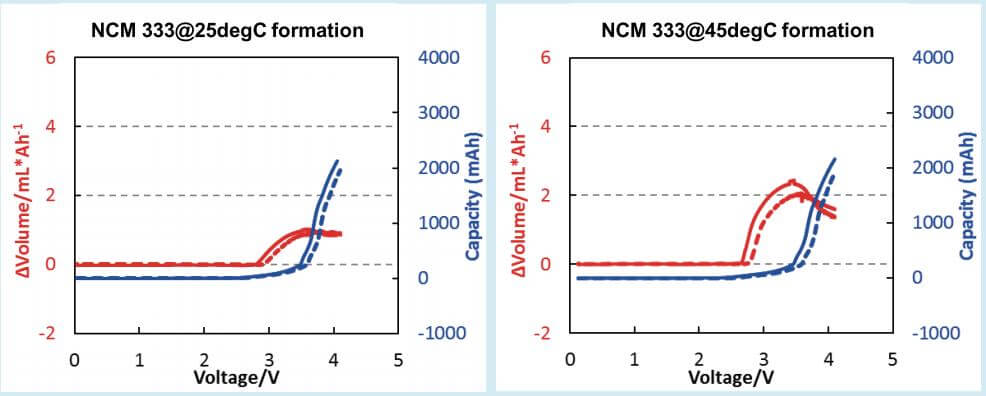
In the same formation process, the SEI film formation reaction at 45 ℃ is more complete than that at 25 ℃.
Formation at different charging rates
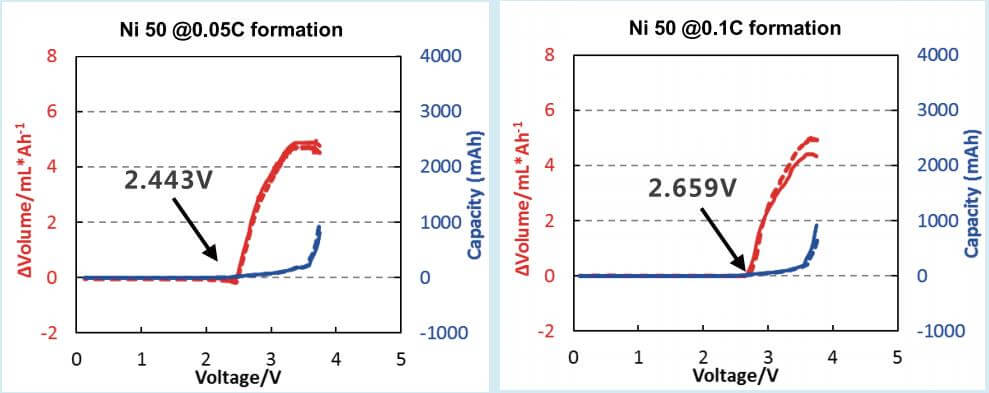
At the same temperature and different generation rates, the reaction starting point of the generation voltage is lower at a lower rate.
The setting of cell forming condition parameters affects the cell forming time and membrane quality. Effective shortening of cell formation time can greatly improve the cell production efficiency of enterprises. By setting parameters of different formation conditions, the starting point of battery gas production voltage and gas production and gas production rate at each formation stage under different formation conditions are quantitatively obtained, which is helpful to guide the improvement of battery formation process and technology and improve the production efficiency of enterprises.
Overcharge-gassing analyze
1.Different NCM materials’ overcharge-gassing application(test condition: 25℃ 0.5℃)
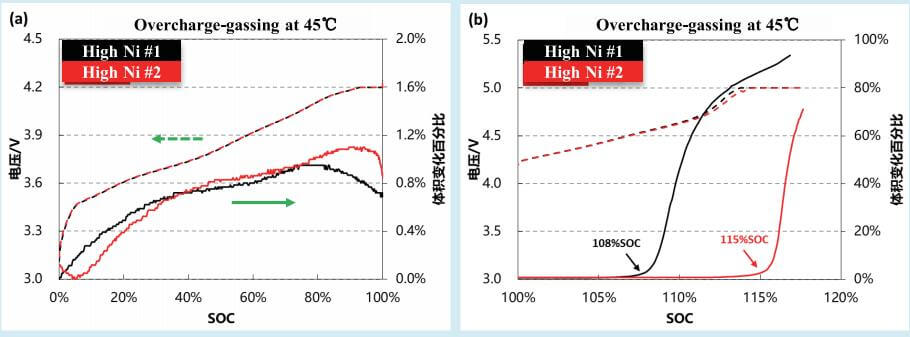 Comparing the battery SOC during gas generation, it can be found that the high nickel battery produces gas earlier;
Comparing the battery SOC during gas generation, it can be found that the high nickel battery produces gas earlier;
By monitoring the normal charging process of the battery cell and the volume and temperature change of overcharge to 200% SOC, and accurately obtaining the decomposition potential and rate of the positive electrode material, it can help quantitatively analyze and study the overcharge performance of the material, make targeted improvements, and improve the research and development efficiency.
2. Overinflation application of different NCM materials (test condition: 25 ℃ 0.5 ℃)
*Within the normal voltage range, the volume change of the battery is less than 1.2%, which is basically due to the structural expansion caused by lithium insertion. When the SOC of high Ni-2 is greater than 40%, the structural expansion of high Ni-1 is slightly larger than that of high Ni-2;
*After overcharging to 5V, the SOC of high Ni-2 material is later than that of high Ni-1 material, which indicates that high Ni-2 material can adapt to higher charging voltage, release more capacity, improve the energy density of battery, and maintain stable structure;
*The SOC and voltage of the battery corresponding to the starting point of gas production can be obtained by using the in-situ method to continuously monitor the overcharged gas production behavior; It is conducive to the next research and development work
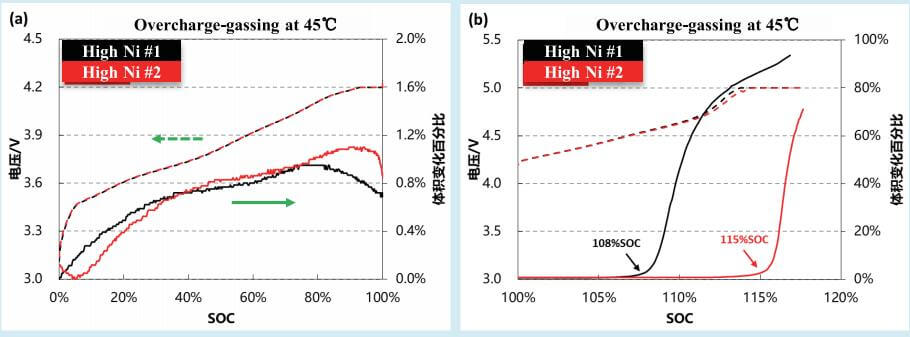
3.Types and contents of electrolyte additives

Comparing the overcharge and outgassing behavior of two kinds of lithium ion batteries with different types and contents of additives, it was found that the reaction potential of additive A was lower than that of additive B, and the total outgassing amount was slightly lower, which could be better used as overcharge protection additive.
Cycle-gassing analyze
Different NCM materials’ overcharge-gassing application(test condition: 60℃ 0.5℃ 3-4.2V)

*Cell A and cell B use different ternary materials. The cell volume of cell B increases more than that of cell A, and the irreversible volume increases from 0.01 ml to 0.04 ml;
*Quantitative analysis is helpful to analyze the cycle performance of different materials and improve the efficiency of research and development.
Storage gas analysis
1. Compare NCM811 modification conditions
Test condition: 4.2V at 85 ℃, full charge 4H
The results show that at 85 ° C, the pressure drop of NCM811 in improved method 1 is greater than that in improved method 2, and the gas production is greater;
The on-site method can be used to continuously monitor the production behavior of stored gas; The advantages of different material modification methods can be compared to improve the research and development efficiency.
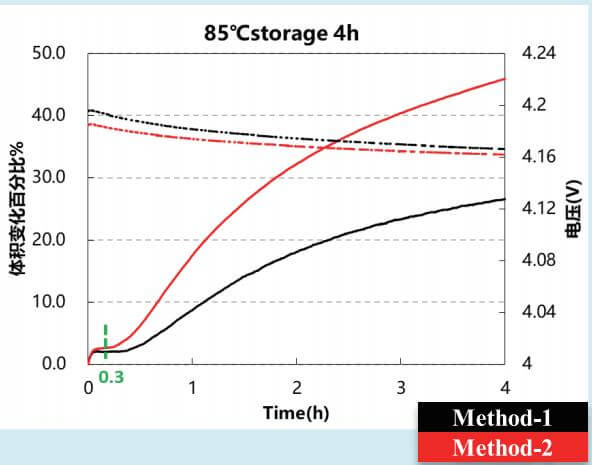
2. Compare different types of electrodes
Test condition: 4.2V at 85 ℃, full charge 4H
*Battery A and B use different electrolyte systems. From the volume change curve of the battery during fully charged storage, it can be seen that EL-A battery produces more gas than EL-B battery, which indicates that the electrolyte of the system is easy to produce gas under high temperature and high pressure;
*Quantitative analysis is helpful to study the gas production performance of different electrolytes and improve research and development efficiency.
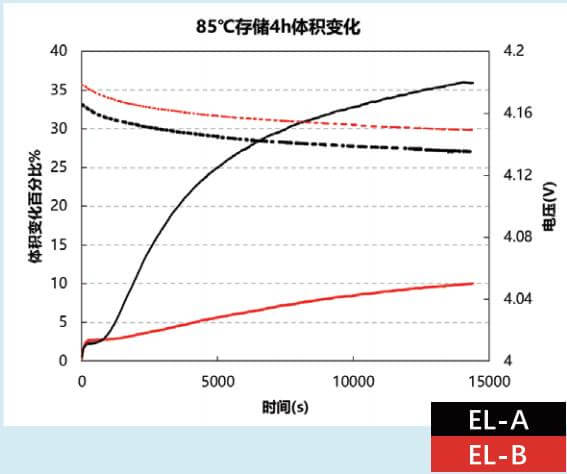
3. Compare different storage temperatures
Test condition: 4.2V at 85 ℃, full charge 4H
The battery has good storage performance at 70 ° C and high gas output at 85 ° C;
The starting point and maximum point of gas production can be obtained by continuously monitoring the production behavior of stored gas using on-site methods, which is helpful for R&D personnel to carry out the next research and development work
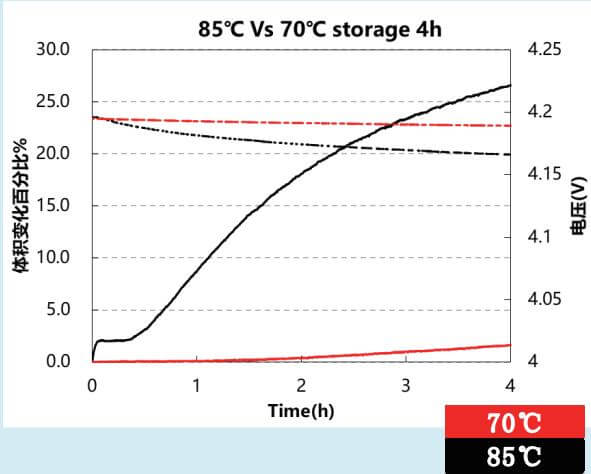
Parameter and installation requirement
Parameters
1.Total weight of pouch cell to be tested: IO-IOOOg, maximum size(excluding tabs, as shown on the below): 180*120 mm
2.Cell test temperature: 20-85℃
3.Resolution of volume change: <1pL
4.Detection accuracy of volume change: <1OpL
5.System stability <20pL(RT25℃, <30min), <50uL(RT25℃, 30min-12h)
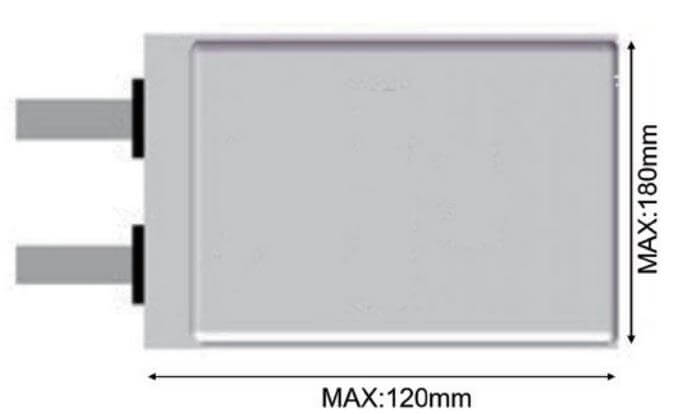
|
Installation requirements of host device
|
|
Desk
|
Balance table
|
|
Battery soaking liquid
|
Mineral oil(like silicone oil)
|
|
Voltage
|
200-240V/50-60Hz
|
|
Voltage variation tolerance
|
±10%
|
|
Power dissipation
|
150W(GVM2100), 280W(GVM2200)
|
|
Environment temperature
|
25±5℃
|
|
Environmental humidity
|
Humidity<95%RH at the temperature of 40℃
|
|
Environmental magnetic field
|
Keep away from intense electromagnetic fields
|
|
Net weight
|
55kg(GVM2100), 60kg(GVM2200)
|
|
Dimension
|
500*500*700 mm
|
|
Auxiliary device
|
|
Charge-discharge device
|
Self-supply or provided by supplier
|
|
Computer
|
Self-supply or provided by supplier
|
|
Model
|
GVM2100
|
GVM2200
|
|
Number of channels
|
Single channel(one pouch cell)
|
Dual channel(two pouch cells)
|

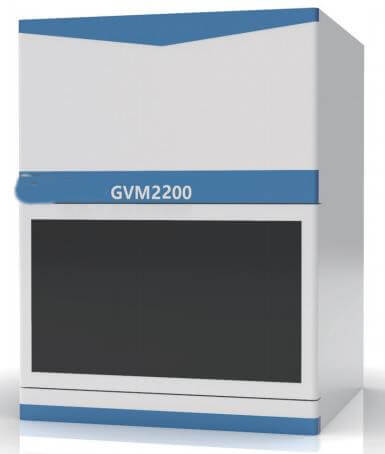

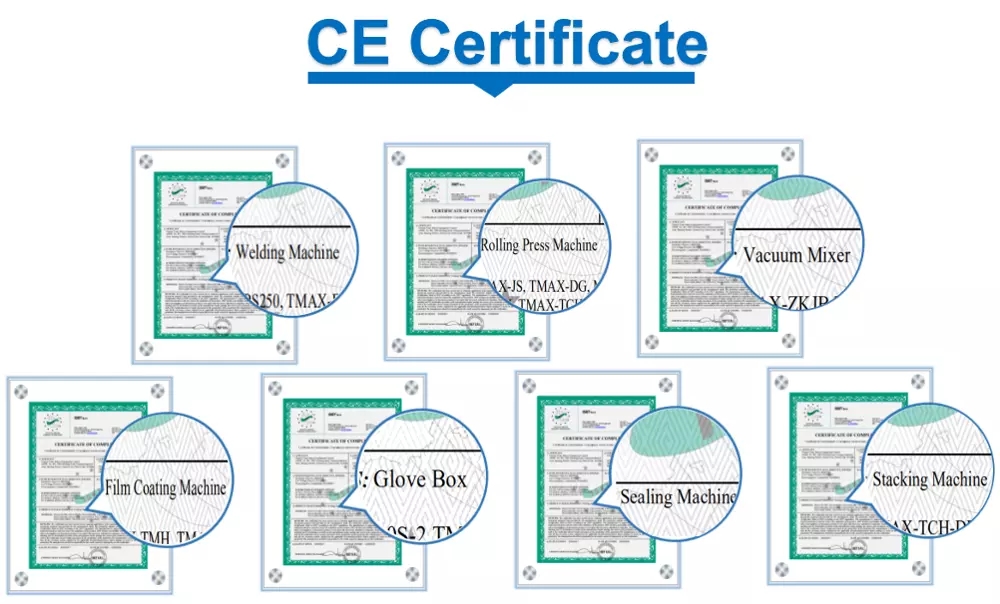

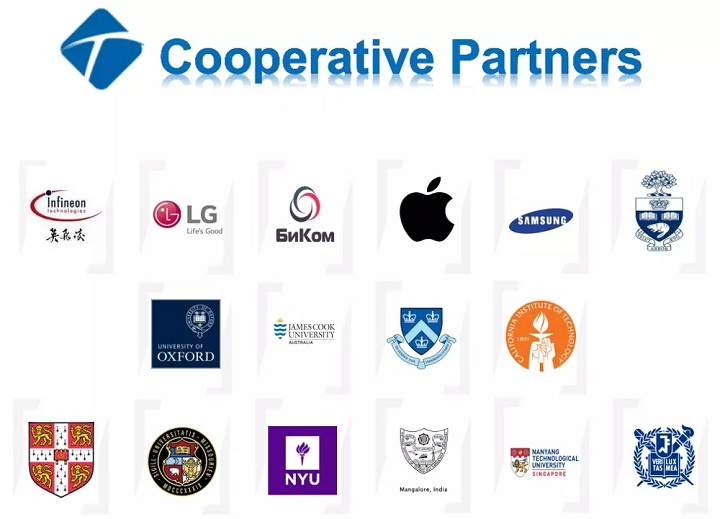

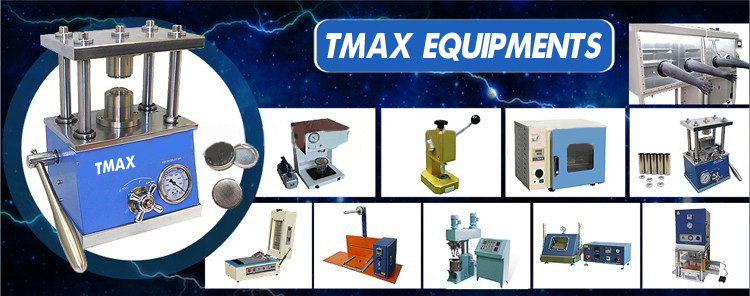


 en
en fr
fr de
de ru
ru es
es pt
pt ko
ko tr
tr pl
pl th
th

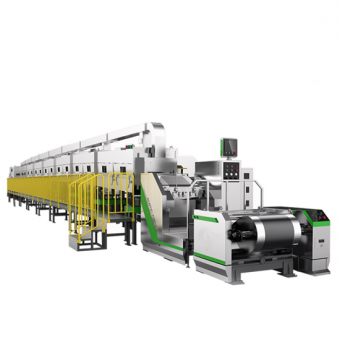
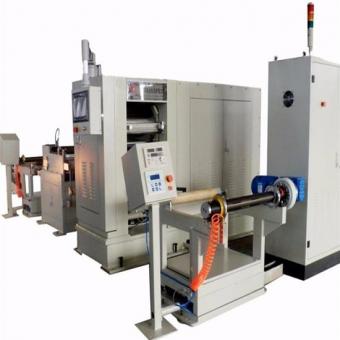
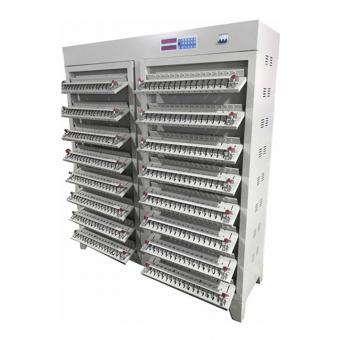
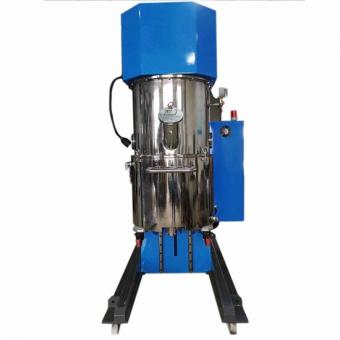





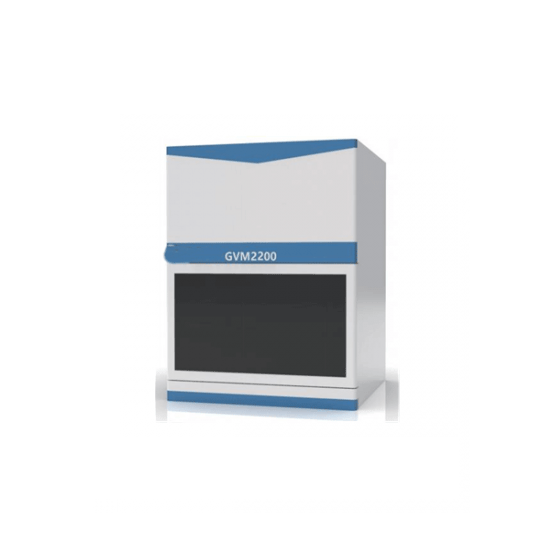




 In the same electrolyte, the gas production and gas production of the battery with electrolyte B added with certain additives are greater than that of electrolyte a without additives. The additive can make the cell membrane formation reaction more complete;
In the same electrolyte, the gas production and gas production of the battery with electrolyte B added with certain additives are greater than that of electrolyte a without additives. The additive can make the cell membrane formation reaction more complete;

 Comparing the battery SOC during gas generation, it can be found that the high nickel battery produces gas earlier;
Comparing the battery SOC during gas generation, it can be found that the high nickel battery produces gas earlier;
















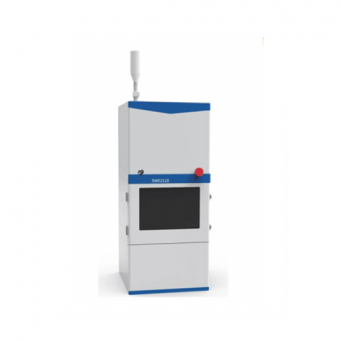
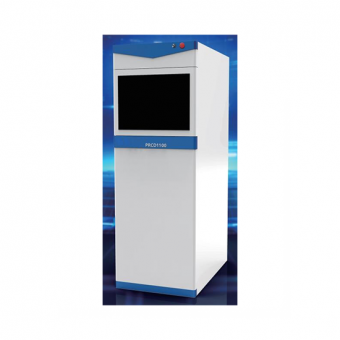
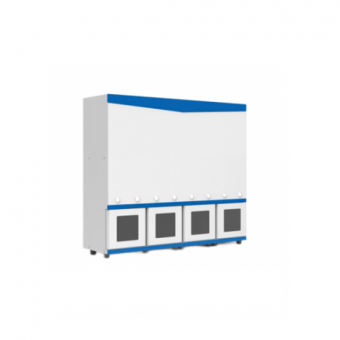
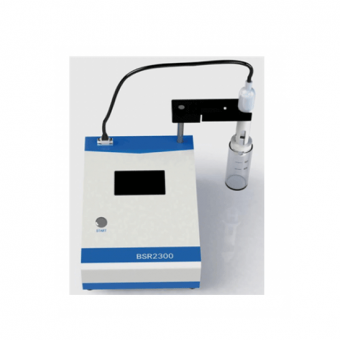
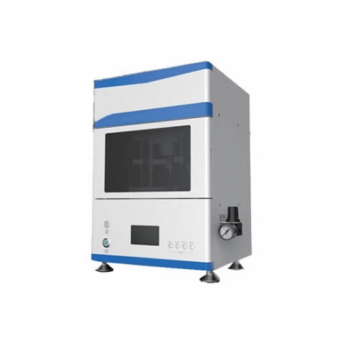
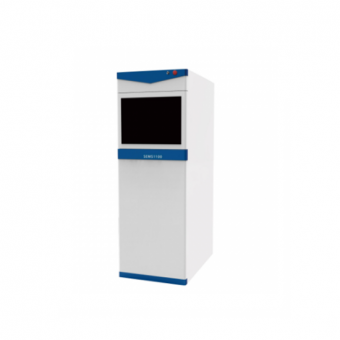
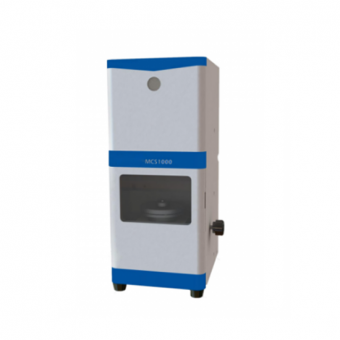
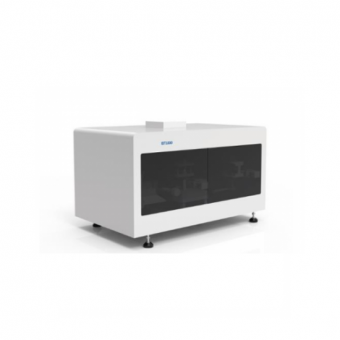






 IPv6 network supported
IPv6 network supported